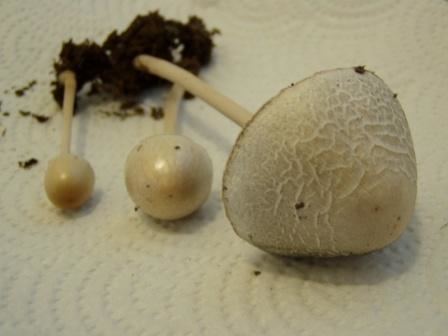Kingdom Fungi Class Agaricomycetes | Division Basidiomycota Order Agaricales Genus Panaeolus Rank Species | |
 | ||
Similar Gymnopilus viridans, Gymnopilus validipes, Psilocybe graveolens, Psilocybe plutonia, Gymnopilus braendlei | ||
Panaeolus africanus is a little brown mushroom that contains irregular amounts of the hallucinogens psilocybin and psilocin. It has been found in central Africa and southern Sudan.
Contents
Description
This is a little brown mushroom that grows on hippopotamus and elephant dung and has black spores. The cap is up to 2 cm in diameter, gray, conic, and often with scaly cracks. It is viscid when moist and the flesh is grey to white. The gills are grayish when young and turn black with a mottled appearance as the spores mature. The stem is 4 cm long by 5 mm thick, and is pruinose at the top. The spores are black, rather variable, 13 x 9 µm, and shaped like almonds. Macroscopically, this species resembles Panaeolus semiovatus var. phalaenarum.
Habitat and distribution
Reported from central Africa to the southern regions of the Sudan. Probably more widely distributed. Found on hippopotamus and elephant dung in the spring or during the rainy seasons.
